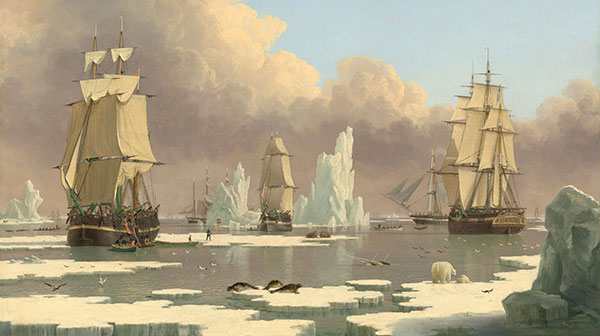
Art and Photography in the Heroic Age of Antarctic Exploration, Part II
David Gariff, Senior Lecturer, National Gallery of Art
In celebration of the 50th anniversary of the Apollo 11 moon landing, this two-part lecture examines art and photography created during the Heroic Age of Antarctic Exploration (from the end of the 19th century to 1922). The Antarctic expeditions of Robert Falcon Scott, Roald Amundsen, Ernest Shackleton, and Douglas Mawson were the equivalent of NASA’s Mercury, Gemini, and Apollo programs.
Antarctica was the last place on earth to be discovered and explored. It was, to many, like going to the moon—and, indeed, photographs of the polar landscape resemble images of the lunar surface. Today, locations on the moon attest to the continuing link between the heroic accomplishments of Antarctic explorers and lunar astronauts. “Shackleton,” named after the Antarctic explorer, is an impact crater at the south pole of the moon. And NASA is now working to send American astronauts to the lunar south pole, a place no human has ever gone before.
Artists and photographers, most notably Herbert Ponting and Frank Hurley, accompanied the various Antarctic expeditions. These artist-explorers made photographs, films, paintings, and drawings that reveal the triumphs and tragedies of first attempts to reach the South Pole. In Part II of this lecture, presented on November 21, 2019, senior lecturer David Gariff explores the artists and photographers who visually documented the Antarctic continent during this heroic age of 20th-century exploration.